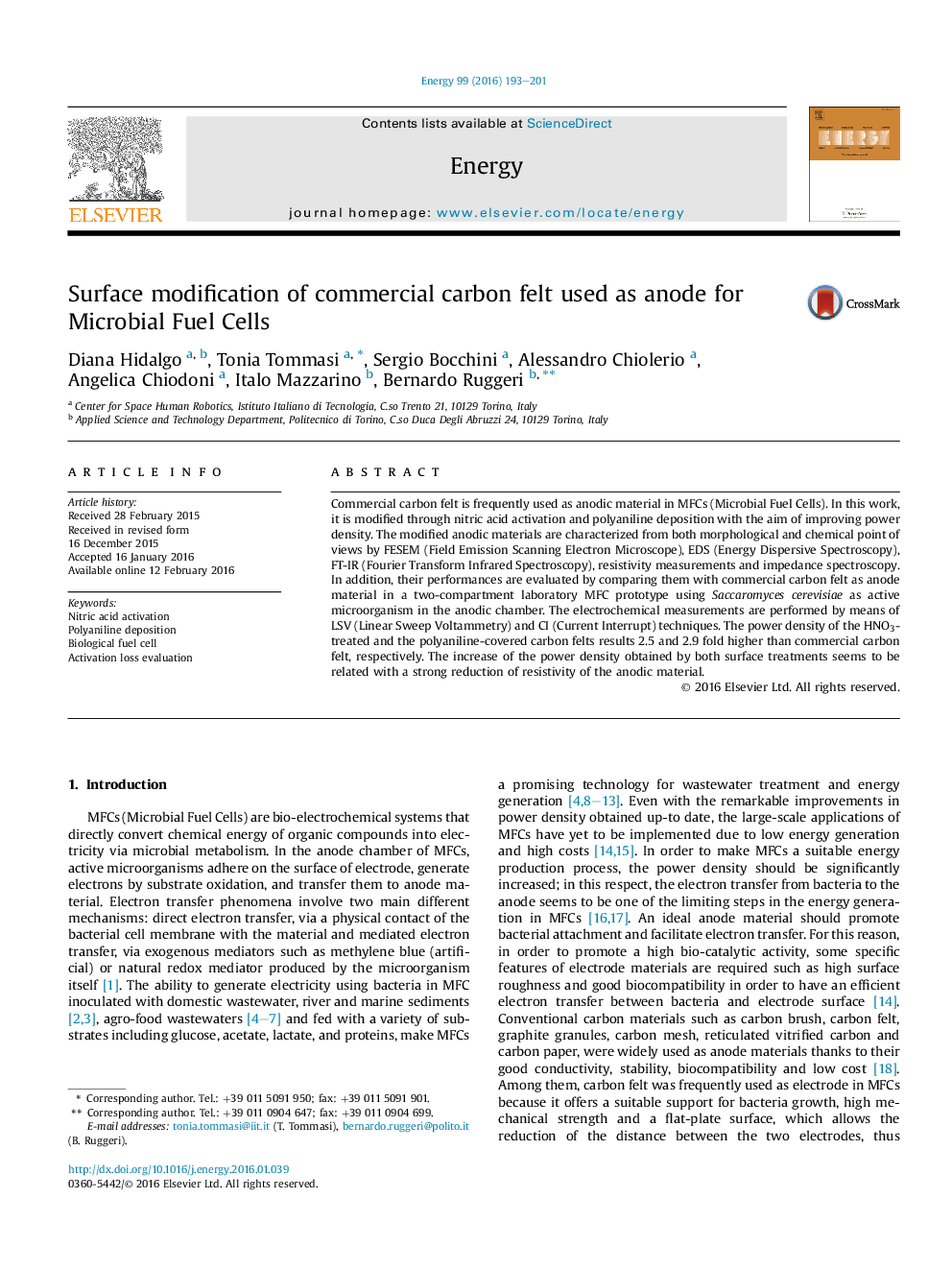| کد مقاله | کد نشریه | سال انتشار | مقاله انگلیسی | نسخه تمام متن |
|---|---|---|---|---|
| 1731328 | 1521449 | 2016 | 9 صفحه PDF | دانلود رایگان |
• Carbon felt is modified using HNO3 activation and original polyaniline layer deposition methods.
• Both modification methods increase roughness and bacteria attachment on carbon felt.
• Modified carbon felts decrease activation losses by promoting electron transfer.
• Power losses are avoided by strong reduction of resistivity of modified electrodes.
• MFC performances are increased up to three times using modified carbon felts.
Commercial carbon felt is frequently used as anodic material in MFCs (Microbial Fuel Cells). In this work, it is modified through nitric acid activation and polyaniline deposition with the aim of improving power density. The modified anodic materials are characterized from both morphological and chemical point of views by FESEM (Field Emission Scanning Electron Microscope), EDS (Energy Dispersive Spectroscopy), FT-IR (Fourier Transform Infrared Spectroscopy), resistivity measurements and impedance spectroscopy. In addition, their performances are evaluated by comparing them with commercial carbon felt as anode material in a two-compartment laboratory MFC prototype using Saccaromyces cerevisiae as active microorganism in the anodic chamber. The electrochemical measurements are performed by means of LSV (Linear Sweep Voltammetry) and CI (Current Interrupt) techniques. The power density of the HNO3-treated and the polyaniline-covered carbon felts results 2.5 and 2.9 fold higher than commercial carbon felt, respectively. The increase of the power density obtained by both surface treatments seems to be related with a strong reduction of resistivity of the anodic material.
Figure optionsDownload as PowerPoint slide
Journal: Energy - Volume 99, 15 March 2016, Pages 193–201
